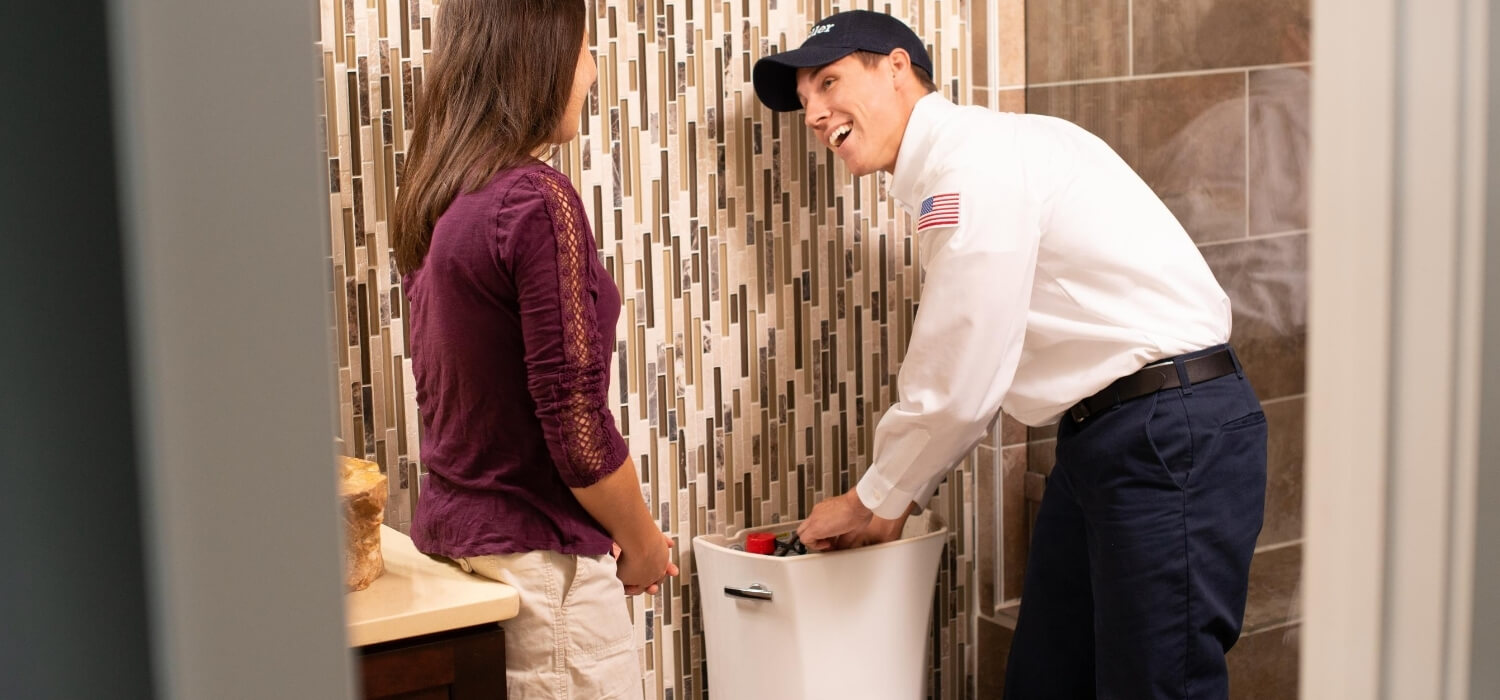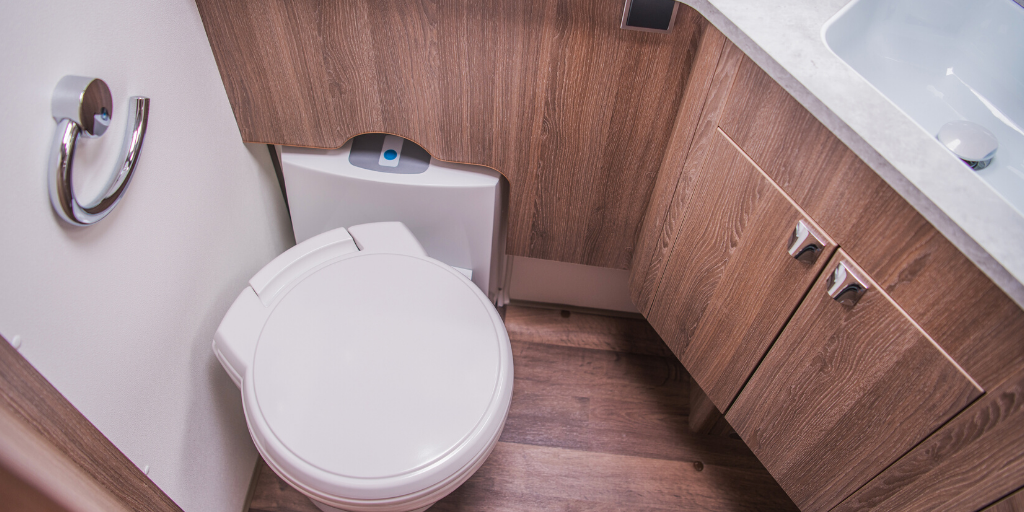Spotting Typical Indications of a Faulty Toilet
Spotting Typical Indications of a Faulty Toilet
Blog Article
What're your thoughts on Common Signs of a Faulty Toilet ?

Plumbing issues at home don't obtain even worse than a faulty toilet. Think of doing your service in the washroom, and also the commode won't flush.
There are numerous signs that your bathroom may be malfunctioning, and also we will quickly look at these signs and occurrences that, when discovered, you need to get in touch with a professional plumbing service to either repair the toilet or reinstall it.
Effects of Faulty Toilets
Faulty toilets can hamper your health and create a boost in utility bills. They can create room for molds, bacteria, and also various other unpleasant organisms to lurk in the bathroom. Faulty commodes can likewise enhance the threat of flooding as well as blocking. Actually, several of these indicators are difficult to map or find, as well as in most cases, you will certainly call for an expert to discover and fix them.
Bathrooms don't last for life, as well as like every other thing, they can outlast their functions and call for a substitute. There are some symptoms and signs that accompany a faulty bathroom, and your capacity to bear in mind of them on time and contact professionals can conserve you a lot of risks.
1. Fracture in the Tank
The very first sign that your Container may be cracked is the existence of water pools near the base of your bathroom. Cracks in the Container are in some cases difficult to spot, specifically if it's just a little one someplace below the waterline. When you observe water deciding on your commode base, it is most probably a sign that your Container has actually cracked, as well as you require to entail the plumbing professionals to spot the area as well as either repair it or change it.
2. Leaky Toilet
Regretfully, the only way you may realize you have a leaky bathroom is when the water bills maintain going up. Dripping commodes are dreadful because they can cause lots of damage in the home, consisting of developing an area for mold and mildews as well as molds, messing up the flooring, and if the faulty toilet is in an upstairs shower room, it can create troubles to areas underneath it.
3. Blockages
If your commode stops more often, you might need to have it inspected. A blocked commode postures a substantial threat to the sewer, specifically when materials other than cells papers and also human waste are flushed down there. Your commode might require more than simply a diving to get back in excellent shape.
4. Weak Flush
If your commode does not let a great deal of water down to purge every little thing, there could be an issue. Ideally, one flush needs to be enough to send all your wastefulness down the sewers. As soon as or two times is tiring as well as influences the bills, having to flush your bathroom even more than. It is a sign of a blocked pipeline or a faulty flushing device. In some cases, the water in the toilet dish is constantly running, and also there is insufficient to flush when you need to. If it's a flapper shutoff trouble or something else, just a specialist can identify.
Let the Pros In
These are a few of the most common causes of a defective bathroom, and now that you recognize, you absolutely have a suggestion why there is constantly water at the base of your bathroom or why it does not flush appropriately.
Rapidly contact a professional when you see these indicators. If you reside in Pittsburgh, our knowledgeable plumbings can help salvage your commode and get it back in great working problems.
Several of these faults are indicative of a demand to replace your commode. We likewise deal with commode setups and substitutes. With our several years of experience in the field, our services are irresistible.
Picture doing your service in the restroom, and also the toilet will not flush. Dripping bathrooms are terrible due to the fact that they can trigger whole lots of damages in the home, consisting of creating an area for molds and mold and mildews, messing up the floor covering, and if the malfunctioning toilet is in an upstairs washroom, it can trigger troubles to spaces under it. If your toilet does not allow a lot of water down to flush every little thing, there may be a trouble. Having to flush your bathroom even more than once or two times is tiring as well as influences the bills. In some situations, the water in the toilet dish is constantly running, as well as there is not adequate to flush when you need to.
Possible Reasons Your Toilet is Leaking
A leaking toilet is one of the most inconvenient and costly plumbing problems that homeowners face. A common tell-tale sign of a leaking toilet is the formation of a puddle near the toilet or moisture spontaneously forming on the toilet’s tank. Another tell-tale sign is a toilet that keeps running or flushing even when it isn’t used. Under normal circumstances, about 27% of water usage comes from toilet flushing. Therefore, a running toilet due to leakage can have a major impact on your water bill if left unfixed.
Needless to say, toilet leaks, whatever the cause, need to be fixed ASAP. If you notice that the toilet leak is rapidly progressing or if you have a plumbing emergency on your hands, reach out to our plumbing emergency experts who are available round the clock and try to shut off the water supply to your toilet while waiting.
However, if you have a minor leak happening with your toilet, you may want to figure out the root cause of it and decide your next steps from there. Well, you’re in the right place! This article covers the top 5 common reasons why toilets leak and how to spot them.
Leaking Supply Line
The supply line is the part of the toilet that supplies water into the tank of the toilet for flushing. The supply line is typically found outside of the toilet and it connects to two points: the supply valve which is typically installed into the wall and to the toilet’s tank. These lines are usually made of either plastic, vinyl, or stainless steel. Problems can arise when the joints of the supply line become weak or loose due to either wear and tear or accidental physical impact. The solution to this problem is typically to replace the supply line altogether.
Broken Wax Seal
The wax seal is located under your toilet where it serves as an impermeable barrier to keep flushed water and sewage from leaking outside. Since this part is enclosed, the most common reason why it gets damaged is simple wear and tear. Replacing the wax seal is a complicated process that involves actually removing the whole toilet from its place. Out of all the causes listed here, this one involves the most risk and should not be considered for DIY. Slight mistakes in the process can leave you with even worse problems.
Damaged Toilet Tank
The toilet tank is a part we’re all familiar with. This holds all the water for flushing as well as the toilet’s flushing mechanisms. Over time, the toilet tank can sustain cracks because of age or physical impact. Fortunately, really small cracks won’t mean that you need to replace your toilet. These can be quickly remedied using a sealer. Larger cracks, however, may get worse and could mean that you need to replace your toilet.
Damaged Toilet Float
The toilet float is located inside the toilet tank and is the ball that you can see floating on top of the toilet tank’s water. This serves to trigger the mechanism for refilling the water in the toilet tank when water levels run low. When this part is damaged, the fill valve of the toilet tends to run continuously. The common cause of damage to this part is wear and tear or inappropriate handling.
https://www.plumbwize.ca/blog/5-reasons-your-toilet-is-leaking/

I hope you enjoyed reading our piece about Signs of a Toilet Problem . Thanks for spending some time to browse our post. Liked our content? Please share it. Help someone else discover it. Thank you so much for going through it.
Visit Url Report this page